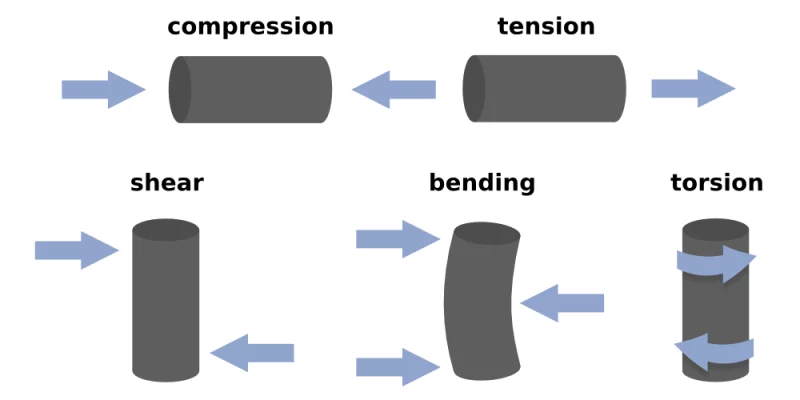Forces and stresses
Engineers determine the loads or external forces that act upon a structure. When external forces are applied to a structure, internal stresses (internal forces) develop resistance to the outside forces. The opposition of external and internal forces is what holds the structure together. Once engineers know the loads acting on a structure, they calculate the resulting internal stresses, and design each piece of the structure so it is strong enough to carry the loads without breaking. The determination of such loads is called stress analysis.
The term “stress” is often used interchangeably with the word “strain.” While related, they are not the same thing. External loads or forces cause stress. Stress is a material’s internal resistance, or counterforce, that opposes deformation. The degree of deformation of a material is strain. When a material is subjected to a load or force, that material is deformed, regardless of how strong the material is or how light the load is.
There are five terms used to describe what type of force can act on a material:
Compression – The force, which pushes everything towards the center of an object – a pushing and squashing force.
Tension – the force which pulls everything away from the center – a pulling and stretching force. Tension is the opposite of compression. Where there is a compressive force, there must be a tensile force.
Bending is found between the pulling of tension and the pushing of compression – a force which is acting at an angle to an object.
Shear is present when two pushing or pulling adjacent forces, acting close together but not directly opposing each other. A shearing load cuts or rips an object by sliding its molecules apart sideways.
Example: scissors and garden shears have a shearing action that causes paper or grass to be cut by making one piece slide across the other, creating two pieces.
Torsion forces occur when a material is being twisted. The two ends of the material rotate in opposite directions creating a twist – like wringing out a wet towel.
Example: Many structures and objects, including cars driving on uneven road surfaces and boats riding over waves, are subject to torsion.


